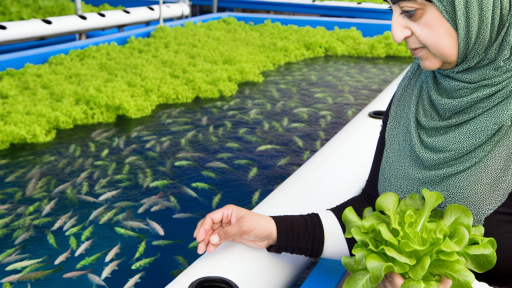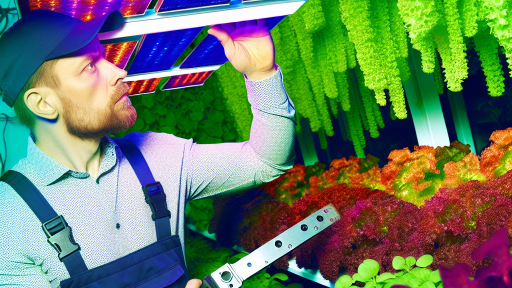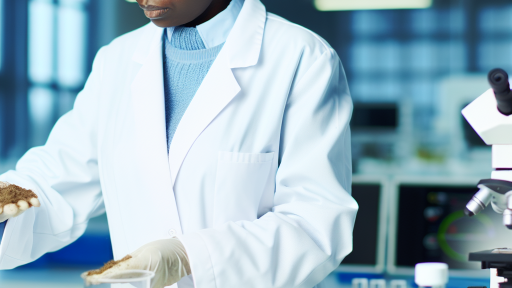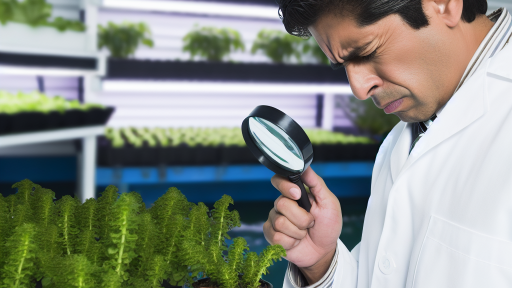Introduction to Pest Forecasting
Pest forecasting plays a crucial role in modern agriculture.
This process empowers farmers to manage pests effectively.
By predicting pest outbreaks, farmers can take proactive measures.
Consequently, they can reduce crop losses significantly.
Moreover, timely interventions enhance overall crop yield.
Understanding the Importance
Pest forecasting helps farmers make informed decisions.
It enables them to allocate resources more efficiently.
Additionally, farmers can optimize their pest control strategies.
This ultimately leads to better environmental sustainability.
Economic Benefits
Accurate pest forecasts can lead to substantial cost savings.
Farmers can reduce expenditures on pesticides and labor.
Furthermore, healthier crops mean higher market prices.
Pest forecasting contributes to a farm’s profitability.
Integrating Technology
Advancements in technology enhance pest forecasting capabilities.
Data analytics can provide insights into pest behavior.
Transform Your Agribusiness
Unlock your farm's potential with expert advice tailored to your needs. Get actionable steps that drive real results.
Get StartedWeather patterns also play a key role in pest predictions.
Moreover, remote sensing tools aid in real-time monitoring.
As a result, farmers can respond effectively to potential outbreaks.
Traditional Pest Management Methods vs. Innovative Approaches
Overview of Traditional Methods
Farmers often rely on conventional pest control strategies.
These methods include chemical pesticides and biological controls.
While effective, they can lead to environmental concerns.
They may also contribute to the development of pesticide resistance.
Limitations of Traditional Methods
Conventional methods sometimes result in unintended consequences.
Pesticides can harm beneficial insects and disrupt ecosystems.
Additionally, they can lead to groundwater contamination.
Farmers face rising costs associated with chemical treatments.
Furthermore, traditional techniques often require extensive field monitoring.
Emergence of Innovative Approaches
New technologies are reshaping the landscape of pest management.
Farmers now have access to precision agriculture tools.
These tools help optimize inputs and improve crop health.
Moreover, they facilitate early detection of pest threats.
Technological Advancements in Pest Forecasting
Remote sensing is revolutionizing pest forecasting.
It enables farmers to monitor crop conditions from afar.
Drones equipped with imaging technology provide real-time data.
As a result, farmers can make informed decisions quickly.
Data Analytics and Predictive Modeling
Data analytics play a crucial role in modern pest forecasting.
AI-driven models analyze vast datasets for patterns.
This process predicts pest outbreaks with improved accuracy.
Consequently, farmers can implement proactive measures.
Showcase Your Farming Business
Publish your professional farming services profile on our blog for a one-time fee of $200 and reach a dedicated audience of farmers and agribusiness owners.
Publish Your ProfileIntegration of Natural Ecosystems
Innovative approaches encourage the use of biological controls.
Farmers now integrate beneficial insects into their pest management plans.
These allies help maintain pest populations at manageable levels.
Moreover, crop diversity enhances ecosystem resilience.
Education and Community Engagement
Farmers increasingly participate in community-based programs.
These initiatives promote knowledge-sharing on pest management strategies.
Workshops and training sessions help disseminate innovative practices.
In this way, farmers can adapt to changing pest dynamics.
Leveraging Technology: The Role of AI in Pest Forecasting
Introduction to AI in Agriculture
Artificial Intelligence is transforming agricultural practices.
Farmers now rely on AI to optimize pest management strategies.
By analyzing data, AI systems can predict pest outbreaks.
This proactive approach helps farmers make informed decisions.
Data Collection and Analysis
Data is the foundation of effective pest forecasting.
Farmers gather data from various sources, including weather patterns and crop conditions.
AI algorithms analyze this data to identify trends.
These trends indicate potential pest threats.
Real-time monitoring enhances the accuracy of predictions.
Machine Learning Techniques
Machine learning plays a crucial role in pest forecasting.
This technology learns from historical data to improve predictions.
Algorithms can adapt to new information over time.
As a result, predictions become more accurate.
Farmers can apply targeted interventions based on these insights.
Integration with IoT Devices
The Internet of Things (IoT) significantly enhances pest forecasting capabilities.
Farmers can deploy sensors to collect environmental data.
IoT devices monitor soil moisture, temperature, and pest activity.
AI systems analyze this data for patterns that indicate pest infestations.
Consequently, farmers receive alerts in real-time.
Mobile Applications for Farmers
Mobile applications provide farmers with easy access to forecasting tools.
These apps offer real-time updates on potential pest threats.
Farmers can receive alerts and recommendations on their smartphones.
This accessibility allows for quicker response times.
Farmers can adjust their practices based on timely information.
Case Studies of Successful Implementation
Several farms have successfully implemented AI-driven pest forecasting.
Green Acre Farms demonstrated a significant reduction in pesticide use.
Through AI predictions, they targeted interventions effectively.
Sunny Valley Orchards reported increased crop yields with fewer pest issues.
Such success stories encourage broader adoption of AI in agriculture.
Future Directions in AI Pest Forecasting
As technology evolves, pest forecasting will continue to improve.
Predictions will become more precise with enhanced data collection methods.
Furthermore, AI will integrate more seamlessly with farming practices.
Showcase Your Farming Business
Publish your professional farming services profile on our blog for a one-time fee of $200 and reach a dedicated audience of farmers and agribusiness owners.
Publish Your ProfileFarmers can expect ongoing innovation in pest management solutions.
This evolution will support sustainable agricultural practices globally.
Discover More: How to Start an Organic Crop Farm: A Beginner’s Guide
Using Drones for Real-Time Pest Monitoring and Data Collection
Introduction to Drone Technology
Drones have transformed the agricultural landscape significantly.
They offer innovative solutions for pest forecasting.
Farmers can monitor their fields more effectively than ever.
Benefits of Drones in Pest Monitoring
Real-time monitoring allows farmers to act quickly.
Drones provide high-resolution images of crops and pests.
This technology reduces the need for manual scouting.
Farmers save time and resources using drones.
Efficient Data Collection
Drones can collect data on pest populations from the air.
This data is essential for making informed decisions.
Farmers can analyze trends and identify problem areas swiftly.
Moreover, drones can track environmental factors that affect pests.
Integrating Drones with Software
Advanced software can process drone-collected data.
Farmers can receive alerts about pest threats in real-time.
Such integration improves pest management strategies.
It helps in planning targeted interventions.
Real-World Applications
Farmers worldwide are adopting drone technology.
In California, vineyards utilize drones for pest assessment.
Agricultural firms in Florida employ drones for crop monitoring.
These examples showcase the practical applications of drones.
Future Prospects
The future of drone technology in agriculture looks promising.
Emerging technologies will enhance their capabilities further.
As drones evolve, they will play a crucial role in sustainable farming.
Farmers can expect improved pest management and higher yields.
Discover More: Early Detection Methods For Crop Disease Forecasting
Integrating IoT Devices for Enhanced Pest Data Analysis
Understanding IoT in Agriculture
The integration of IoT devices is revolutionizing pest forecasting for farmers.
These devices collect real-time data from the fields.
Farmers can make informed decisions based on precise information.
Types of IoT Devices
Several types of IoT devices play crucial roles in pest management.
- Sensors monitor environmental conditions like temperature and humidity.
- Cameras capture images of crops to identify pest infestations.
- Drones provide aerial views to assess larger areas quickly.
Each device contributes crucial data to improve pest predictions.
Data Collection and Analysis
IoT devices gather valuable data continuously.
This data undergoes analysis using advanced algorithms and machine learning.
As a result, farmers receive timely alerts about potential pest threats.
Moreover, historical data allows for better forecasting of pest invasions.
Benefits of IoT Integration
Integrating IoT devices offers numerous benefits for farmers.
- Increased efficiency in pest detection and management.
- Reduced reliance on harmful pesticides.
- Enhanced crop yields through proactive measures.
Farmers reduce costs while promoting sustainable practices.
Real-World Examples
Farmers worldwide embrace IoT technology to combat pests effectively.
For instance, Green Farm Technologies utilizes sensor networks for real-time monitoring.
Showcase Your Farming Business
Publish your professional farming services profile on our blog for a one-time fee of $200 and reach a dedicated audience of farmers and agribusiness owners.
Publish Your ProfileSimilarly, AgroDrone Solutions deploys drones equipped with imaging devices to monitor pest activity.
Such innovative approaches demonstrate the effectiveness of IoT in agriculture.
Learn More: Starting Your Own Hydroponic Garden
Predictive Analytics: Modeling Pest Behaviors with Big Data
Introduction to Predictive Analytics in Agriculture
Predictive analytics leverages data to forecast pest behaviors.
Farmers can use these insights to make informed decisions.
Analytical models analyze patterns from historical data.
As a result, predictions become more accurate over time.
Data Collection Techniques
Successful predictive analytics starts with robust data collection.
Farmers can gather data from various sources.
- Weather stations provide environmental conditions.
- Soil sensors measure moisture levels and nutrients.
- Remote sensing technology offers insights from above.
Continued advancements enhance data accuracy and relevance.
Modeling Pest Patterns
Modeling involves identifying pest lifecycle stages and behaviors.
Data scientists utilize machine learning algorithms for modeling.
Algorithms can predict infestations based on environmental triggers.
Regular updates to models ensure adaptation to changing conditions.
Case Studies and Success Stories
Farmers have seen success using predictive analytics recently.
Case studies illustrate these innovative approaches.
- The Johnson family farm reduced pesticide use by 30%
- Smith Orchards improved yield by predicting apple moth outbreaks.
- Green Valley Farms increased profits by optimizing pest control applications.
Such examples highlight the effectiveness of data-driven strategies.
Challenges and Considerations
Despite the benefits, challenges remain in implementing these techniques.
Data accuracy is crucial for making reliable predictions.
Farmers must invest in technology and training to optimize results.
Furthermore, collaboration among stakeholders enhances collective learning.
Future Trends in Pest Forecasting
Looking ahead, pest forecasting tools will evolve further.
Integration of artificial intelligence will enhance predictive capabilities.
Pest management systems will become more automated and efficient.
Ultimately, farmers will cultivate more resilient crops as a result.
You Might Also Like: Utilizing Technology In Pest And Disease Forecasting
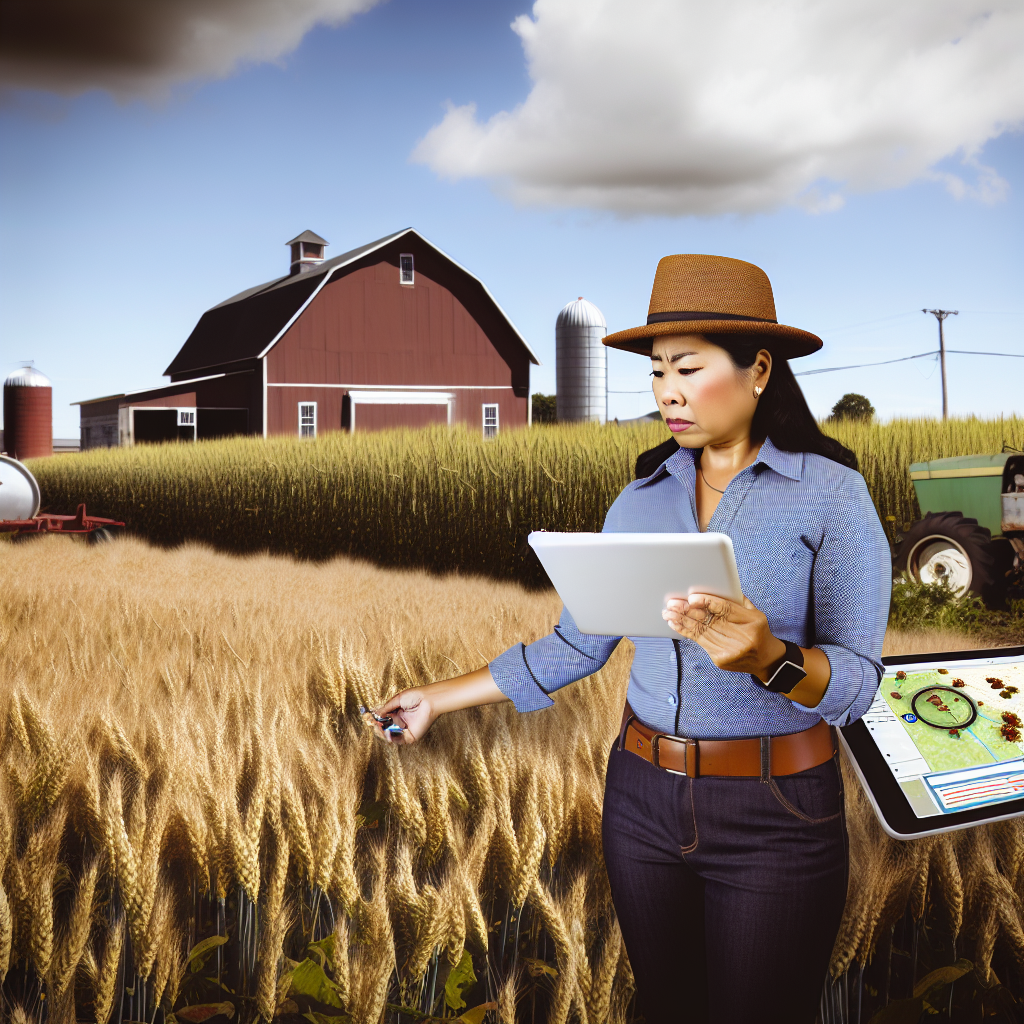
Collaboration with Agricultural Research Institutions for Improved Forecasting Tools
Importance of Collaboration
Collaboration significantly enhances pest forecasting accuracy.
Research institutions bring valuable expertise and resources to the table.
Farmers benefit from advanced technologies developed through this partnership.
Moreover, shared data leads to more reliable predictions of pest outbreaks.
Building Strong Partnerships
Establishing partnerships begins with open communication between stakeholders.
Farmers must express their specific needs and challenges related to pest management.
Regular meetings foster trust and collaboration among all parties involved.
Additionally, joint workshops can improve understanding of pest dynamics.
Utilizing Technologies and Innovations
Innovative technologies play a crucial role in pest forecasting.
Remote sensing and data analytics provide farmers with real-time information.
Collaboration with institutions facilitates access to cutting-edge tools.
Furthermore, machine learning models can predict pest movements more accurately.
Training and Capacity Building
Training programs empower farmers to use forecasting tools effectively.
Research institutions can develop tailored training sessions for local communities.
Showcase Your Farming Business
Publish your professional farming services profile on our blog for a one-time fee of $200 and reach a dedicated audience of farmers and agribusiness owners.
Publish Your ProfileHands-on demonstrations enhance learning experiences for farmers.
Ultimately, well-informed farmers make better decisions regarding pest control.
Feedback and Improvement
Continuous feedback from farmers is essential for refining forecasting tools.
Collaboration enables institutions to adapt their models based on real-world outcomes.
Regular assessments help identify areas for improvement in forecasting accuracy.
As a result, the partnership evolves to meet the changing needs of agriculture.
Case Studies: Successful Implementation of Innovative Pest Forecasting on Farms
Introduction to Innovative Pest Forecasting
Innovative pest forecasting changes how farmers approach pest control.
These methods utilize advanced technology and data analysis.
Farmers can enhance crop protection through accurate predictions.
Case Study: Green Valley Farms
Green Valley Farms implemented a digital pest prediction system.
This system uses machine learning algorithms to analyze data.
Farmers reported a 30% reduction in pesticide usage.
Consequently, they witnessed a significant increase in yield.
Key Technologies Used
Green Valley Farms employed satellite imaging and weather data.
These tools helped identify high-risk areas for pest outbreaks.
Furthermore, real-time monitoring systems improved response times.
Results and Impact
Farmers at Green Valley experienced enhanced crop health.
The local ecosystem showed signs of improvement as well.
This case illustrates the potential of innovative forecasting methods.
Case Study: Sunny Acres Orchard
Sunny Acres Orchard utilized a mobile app for pest forecasting.
The app provided farmers with timely alerts about pest activity.
Farmers adjusted their strategies based on these notifications.
Community Engagement
Sunny Acres encouraged community sharing through the app.
Farmers exchanged insights on pest behavior and trends.
This collaboration led to increased understanding and responses.
Challenges Overcome
Initially, some farmers were skeptical about technology use.
The team organized workshops to demonstrate its effectiveness.
Gradually, most farmers adopted the app for their operations.
Comparative Analysis of Strategies
Each case study highlights different methods of pest forecasting.
Green Valley focused on technology-driven approaches.
Sunny Acres prioritized community interaction and mobile solutions.
Benefits of Technological Integration
Technology enhances accuracy in pest forecasting significantly.
Farmers can make better decisions based on real data.
This leads to efficient pest management and resource use.
Importance of Community Collaboration
Community knowledge sharing provides diverse insights.
Farmers learn from one another’s experiences and successes.
Such cooperation improves overall farm productivity and resilience.
Future Directions: Innovations on the Horizon for Pest Forecasting
Emerging Technologies in Pest Forecasting
Technological advancements are transforming pest forecasting methods.
Artificial intelligence plays a significant role in predictive analytics.
Farmers now use machine learning to identify patterns in pest behavior.
Showcase Your Farming Business
Publish your professional farming services profile on our blog for a one-time fee of $200 and reach a dedicated audience of farmers and agribusiness owners.
Publish Your ProfileRemote sensing technologies enhance monitoring of pest populations.
Integrated pest management systems incorporate these innovations effectively.
Data-Driven Decision Making
Big data analytics is revolutionizing farming practices.
Conducting data analysis helps in forecasting pest outbreaks accurately.
Farmers can derive insights from historical pest data.
Moreover, real-time data feeds facilitate timely interventions.
This approach reduces pesticide use and promotes sustainability.
Collaboration and Information Sharing
Collaboration among farmers enhances pest forecasting efforts.
Sharing information on pest sightings can improve overall accuracy.
Online platforms allow farmers to exchange data and strategies.
Such cooperation leads to effective and timely pest control measures.
Integrating Climate Data
Climate change significantly impacts pest populations.
Integrating climate data into forecasting models is crucial.
This integration helps predict shifts in pest behavior and distribution.
Farmers can adapt their strategies based on projected climatic conditions.
Thus, climate-informed pest management becomes a priority.
Developing User-Friendly Applications
Mobile applications provide farmers with accessible pest forecasting tools.
These applications offer localized forecasts and alerts.
Farmers can make informed decisions based on user-friendly interfaces.
Additionally, gamification elements can increase user engagement.
As a result, more farmers adopt these technologies for better outcomes.
Additional Resources
Climate Change to Drive Surge in Insects That Attack Almonds …
National Program 304 Crop Protection and Quarantine Action Plan …

